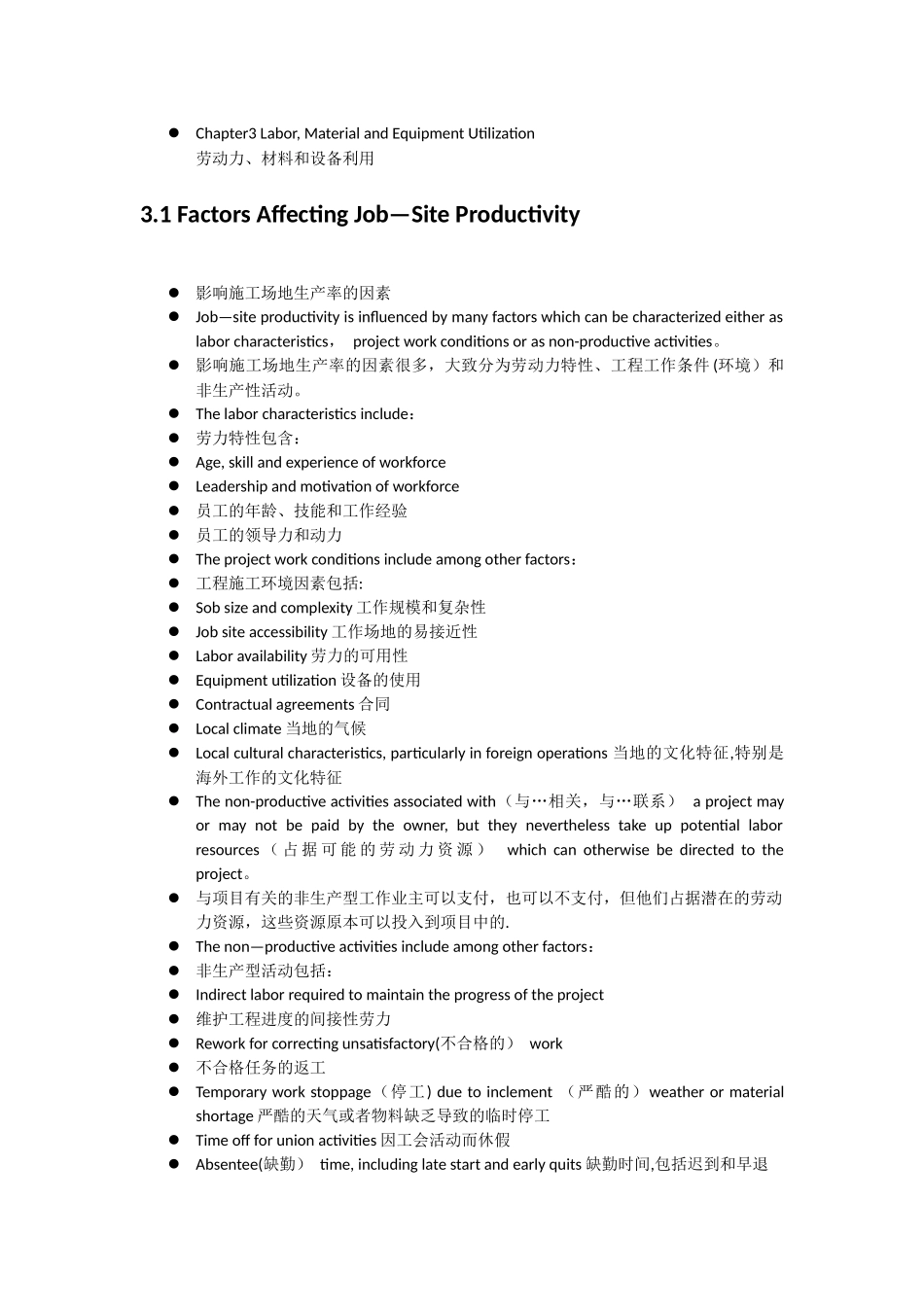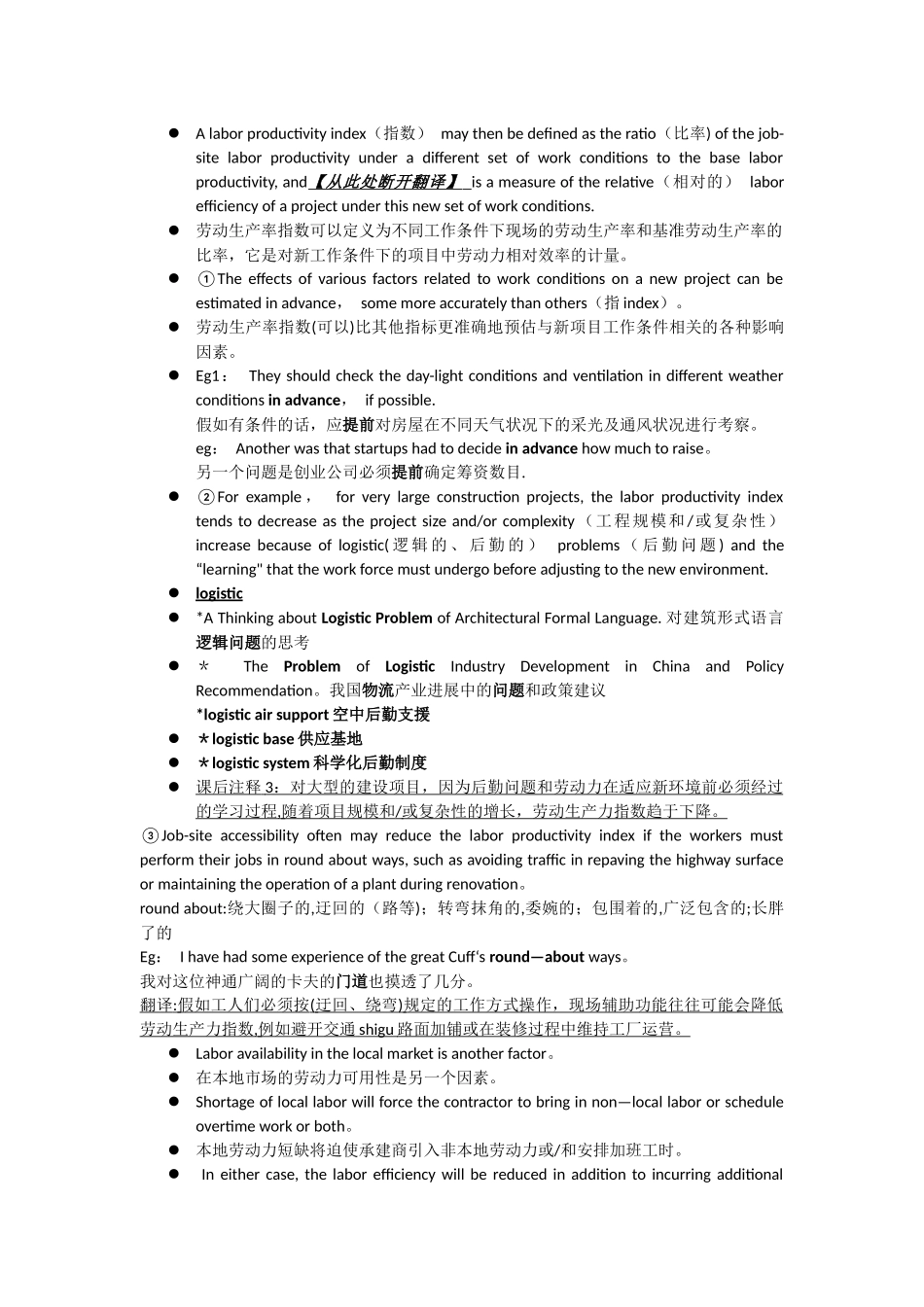Chapter3 Labor, Material and Equipment Utilization劳动力、材料和设备利用3.1 Factors Affecting Job—Site Productivity 影响施工场地生产率的因素 Job—site productivity is influenced by many factors which can be characterized either as labor characteristics, project work conditions or as non-productive activities。 影响施工场地生产率的因素很多,大致分为劳动力特性、工程工作条件 (环境)和非生产性活动。 The labor characteristics include: 劳力特性包含: Age, skill and experience of workforce Leadership and motivation of workforce 员工的年龄、技能和工作经验 员工的领导力和动力 The project work conditions include among other factors: 工程施工环境因素包括: Sob size and complexity 工作规模和复杂性 Job site accessibility 工作场地的易接近性 Labor availability 劳力的可用性 Equipment utilization 设备的使用 Contractual agreements 合同 Local climate 当地的气候 Local cultural characteristics, particularly in foreign operations 当地的文化特征,特别是海外工作的文化特征 The non-productive activities associated with(与…相关,与…联系) a project may or may not be paid by the owner, but they nevertheless take up potential labor resources ( 占 据 可 能 的 劳 动 力 资 源 ) which can otherwise be directed to the project。 与项目有关的非生产型工作业主可以支付,也可以不支付,但他们占据潜在的劳动力资源,这些资源原本可以投入到项目中的. The non—productive activities include among other factors: 非生产型活动包括: Indirect labor required to maintain the progress of the project 维护工程进度的间接性劳力 Rework for correcting unsatisfactory(不合格的) work 不合格任务的返工 Temporary work stoppage(停工) due to inclement (严酷的)weather or material shortage 严酷的天气或者物料缺乏导致的临时停工 Time off for union activities 因工会活动而休假 Absentee(缺勤...


